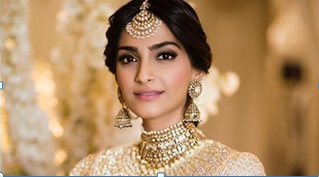

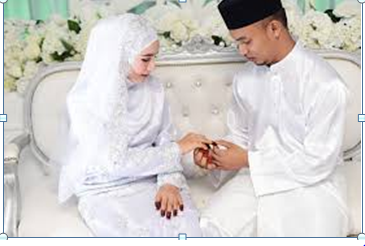
While attending a local wedding I was struck by how hair jewelry of the bride made everything look so very symmetrical. As the piece was resting on the forehead, it was the first thing your eyes looked at. Brides look beautiful all over the world. Jewelry is a big component when it comes to decorating the bride. Different cultures resort to different jewelry traditions. I was intrigued by the use of headdresses and head jewelry in general. So I did the only obvious thing to do. I headed out around the world to learn more about decorating an important part, the bride’s head. Lucky for me that I live in the twenty-first century so all I had to do was to go on youtube and learn about different traditions.
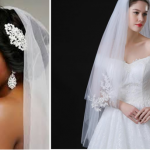
Second stop was Japan. Japanese weddings are elaborate and there is a lot of emphasis on showing respect to the guests, the deceased as well as the families looking to unite. The brides covered their heads under a headdress which is a giant cotton hat shaped like a hood. The intention is to hide face so that only the husband sees it after the wedding. As you guessed, the foreheads were still bare and there was no partition of hair as it was under a decorated wig almost as hard as a helmet.
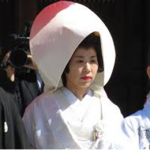
Malaysian weddings are rather simple in nature. The bride and groom wear traditional clothes and its mostly the color white. The bride head, where I was focusing on was a very simple headdress. The overall effect was that of elegance and simplicity. The head was decorated by jewels in some instances however you guessed it, there was no partition or a jewel dedicated to a partition of hair.
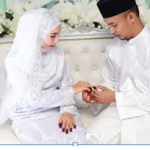
After my escapades online I decided to search for information on my own homeland where the brides are said to do ‘Solha Singhaar’ which means that sixteen traditional forms of jewelry adorn the bride from head to toe.
We decided to understand the traditions up close and what better place to go and learn all about it other than Tariq Road, Karachi which is the modern-day center of bridal wear business and attracts huge crowds all year round. Upon entering the mall you will find shops dedicated to various forms of clothes, shoes, jewelry, and accessories. You will find entire levels dedicated to made-to-order bridal wear, groom’s traditional dresses, custom suit makers, shoe sellers, jewelry shops. It’s easy to get distracted by the shops gleaming with all glitz and glamour in these halls dedicated to weddings. We had to remind ourselves that we are here on a mission, To learn more about the hair partition jewelry.
So with a lot of self-control, we pulled our eyes away from attractive displays and asked for directions to the bridal jewelry shops with the intention of speaking to someone who can educate us better for the benefit of our readers online. During wedding season, it’s very rare for these craftsmen to be free however they are so dedicated to their craft and its promotion that when you show curiosity for their work then they are willing to give you time. Upon enquiring the prices of the dresses, we found that all custom dresses cost a good three months salary or more. This practice is not unlike the West where the rule of the thumb is to buy a ring that costs three months of your salary. The groom is expected to provide for the dress, shoes and all accessories as a symbol that he can take care of the bride and provide for her.
The following is the gist of what we learned from various people. We are thankful to all of them for sharing this knowledge with us and would like to mention the owner of ‘BeQueen’ bridal wear, Mr. Saleem who brought us up to speed on the historical significance of the hair partition. He gave us one hour of his time in his bridal store which is located in Mateen Center, at Tariq Road.
https://www.bequeen.com.pk/bridal-wear/
Before marriage, a girl never covers her hair’s partition with jewelry, at least not traditionally. There is a specific reason for that. Marriage symbolizes the presence of a protector in one’s life. Marriage marks the arrival of the husband who is supposed to look after all the needs of a bride.
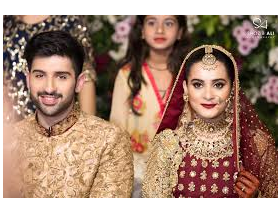
Americans are expected to write and rewrite them until they are satisfied with the vows. In the case of the Japanese, the groom reads out the vows written by the management of the place where the wedding service is happening. In the subcontinent, the vows are not read or written. They however are not absent. They take the form of Maang Tikka. The word Maang translates to ‘Wish’ or ‘demand’. The ‘Maang Tikka’ is placed in the partition of the hair such as the drop-shaped jewelry rests beautifully on the forehead of the bride. Incidentally, the hair partition also translates to the word ‘Maang’ in Urdu. The now bejeweled and filled hair partition signifies that there is someone in the bride’s life whose job it is to fulfill all her demands and wishes. It is common practice for different cultures to have couples make vows. In the subcontinent, you do that in a subtle fashion.
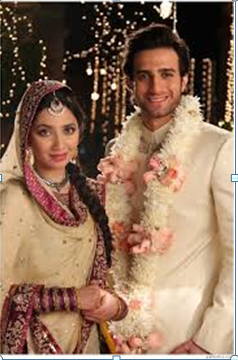 I must say I was very glad that I dug up all this information, the significance of history behind jewelry for the hair partition is fascinating to me. Previously, all the jewelry just represented wealth or festivities to me however after finding out all this I look to it with newfound respect. To me, a Maang Tikka is nothing short of sacred.
I must say I was very glad that I dug up all this information, the significance of history behind jewelry for the hair partition is fascinating to me. Previously, all the jewelry just represented wealth or festivities to me however after finding out all this I look to it with newfound respect. To me, a Maang Tikka is nothing short of sacred.
